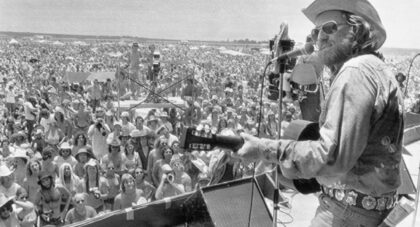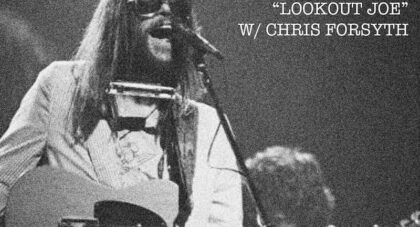On April 13th, over twenty guitarists will descend upon John Fahey’s boyhood home of Takoma Park, Maryland, for an event called The Thousand Incarnations of the Rose — A Festival of American Primitive Guitar.
The three-day festival–the first of its kind–is the brainchild of guitarists/scholars Glenn Jones and Jesse Sheppard, and features, in addition to the performances, a panel discussion, rare film screenings, and a social room with community vendors. The festival coincides with the compilation The Thousand Incarnations of the Rose —American Primitive Guitar & Banjo (1963-1974), to be released on CD and triple vinyl via the Craft label on March 23rd.
James Jackson Toth of Wooden Wand recently spoke with co-organizer Jesse Sheppard about the event and the enduring legacy of American Primitive.
Aquarium Drunkard: Tell me how this idea originated. Who came up with the concept of staging the first ever American Primitive festival? How long has such an idea been gestating?
Jesse Sheppard: It seems like the idea of getting all the American Primitive players together has floated around in the backs of a lot of people’s minds over the years. I know some players got together in New York after Fahey died, but since then I don’t think it’s been discussed much. For me, this music is a family and the thought of bringing everyone together was enticing but never seemed practical. It wasn’t until a series of overlapping conversations took place around the middle of last year that the concept of The Thousand Incarnations of the Rose Festival came into existence. The start of it all was really the evening my band [Elkhorn] played RhizomeDC in Takoma Park last June. I was sitting out back with Steve Korn (co-founder and president of the space) and he asked if I’d be interested in doing some kind of solo guitar festival with him. I think he knew that I was close to a lot of the players from the video work I’ve done and setting up and playing shows over the years. The funny thing was that only a few days earlier I had heard from Glenn Jones (guitarist, writer, friend of John Fahey and Robbie Basho and Jack Rose) that he had just completed the liner notes for a 2 LP compilation album of early American Primitive players that was coming out on Craft Recordings. His essay (over 6,000 words) was a deep dive into the history and meaning of the music that had been such an animating presence in his life and in the lives of so many others. So I connected Steve with Glenn and at that point the festival was definitely becoming more real.
What really pushed it into existence were conversations that Steve had with Laura Barclay at Main Street Takoma (the local business association) as well as others. They were aware that Takoma Park was Fahey’s childhood home (in fact Takoma was referenced in a lot of his early song titles and obviously gave its name to his record label), and were excited to help support an event that would bring attention to the creative history of the town. The last piece of the puzzle was the conversation that Kathy Harr was having with her husband, Josh Pfeffer (who is also the festival’s webmaster and graphic designer), about selling their house in Berkeley and moving east. Kathy had run her own booking agency (where she had booked tours for Glenn’s band Cul de Sac) and had been one of the organizers of the Terrastock festivals, but her life had taken a turn into local politics. The move was sort of her return to the music world and she was looking for a cool project to sink her teeth into. So Glenn put Kathy in touch with me. Suddenly there was a team and a concept and some support... we were on our way.
Only the good shit. Aquarium Drunkard is powered by its patrons. Keep the servers humming and help us continue doing it by pledging your support.
To continue reading, become a member or log in.


